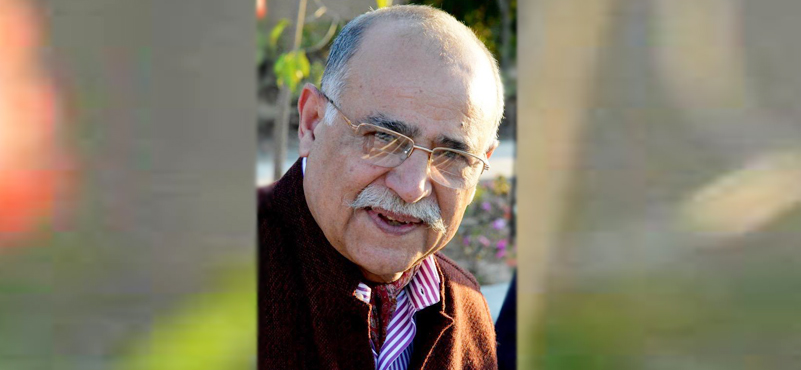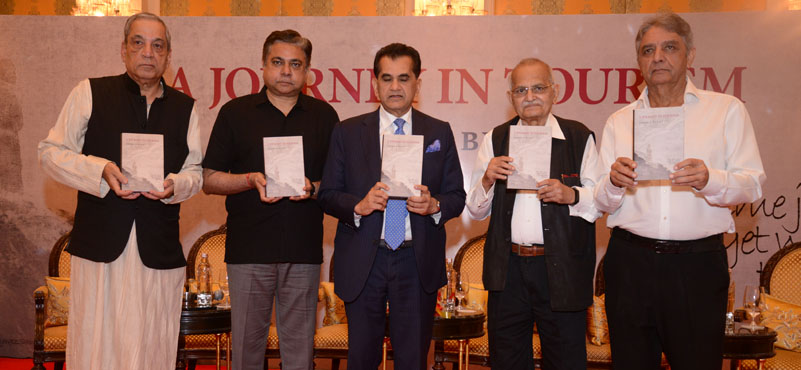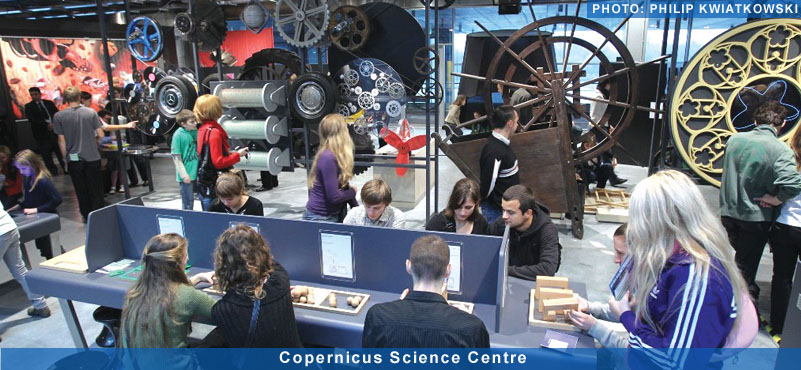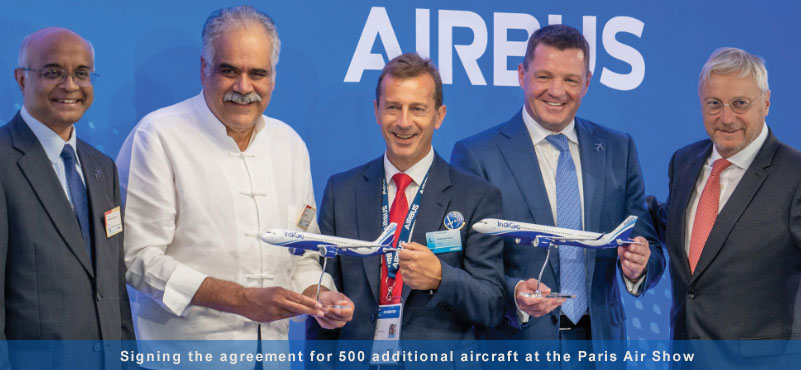Having spent more than four decades in the travel and tourism sector, S.S.H. Rehman knows very well that the many stakeholders have to come out of their silos and act with a unity of purpose to be able to harness the country’s missed tourism potential. This interview was conducted before the lockdown and before we knew any of what was coming! What Rehman has to say deserves even more urgent attention because when the recovery begins, it is important to start on a fresh page, in the knowledge and belief that our existing models have not produced the desired results. We can exercise choice at this juncture, accept that change is imperative and lot of catching up is required.
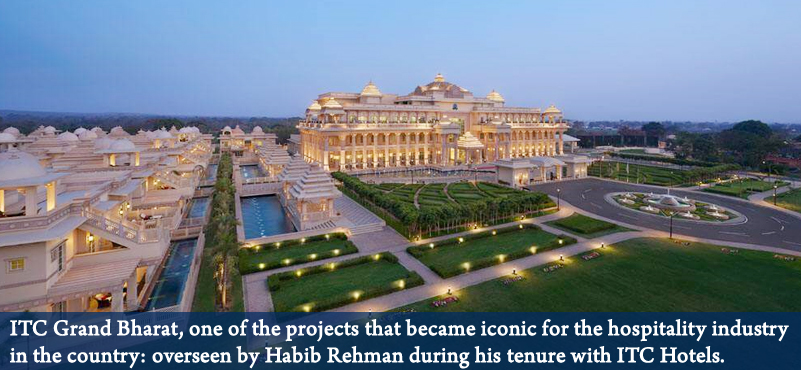 HAVING HAD a ringside view of the hospitality industry since he joined it in 1975 after leaving the Indian Army, Sahibzada Syed Habib-ur Rehman, or Major Rehman, as everyone knows him, is very well aware that tourism is not a single-ministry, nor a single-sector activity. Having seen the evolution of the industry, and seen little change in its dominant narrative, Rehman makes a strong case for its many stakeholders to act with a unity of purpose, like an army unit does on the borders, if the figures for international arrivals have to get anywhere near the benchmarks a country of the size and diversity of India must aspire to.
HAVING HAD a ringside view of the hospitality industry since he joined it in 1975 after leaving the Indian Army, Sahibzada Syed Habib-ur Rehman, or Major Rehman, as everyone knows him, is very well aware that tourism is not a single-ministry, nor a single-sector activity. Having seen the evolution of the industry, and seen little change in its dominant narrative, Rehman makes a strong case for its many stakeholders to act with a unity of purpose, like an army unit does on the borders, if the figures for international arrivals have to get anywhere near the benchmarks a country of the size and diversity of India must aspire to.
“For more than 40 years, we have been talking about our tourism potential – we have been both hopeful and circumspect,” Rehman said during a freewheeling conversation with Tourism First at his Panchsheel Park home in New Delhi named after his late pet dog, Gori, on whom he has authored a book. “Instead of people endlessly talking about the promise, we will find the answers we have been seeking if we all sit down and examine why we have not achieved what we had sought to do so more than four decades back.”
In our discussions on tourism policy, Rehman stated emphatically, we must not lose sight of the fact that it is a complex business. “We started out with the idea that if we have a ministry, it will drive our tourism objectives, but we did not fathom the complexity of the business. Tourism is a business of businesses, an industry of industries, and a ministry of ministries,” Rehman said, and he then went on to list the players whose paths cross the travel and tourism business.
A COMPLEX WEB OF INTERESTS
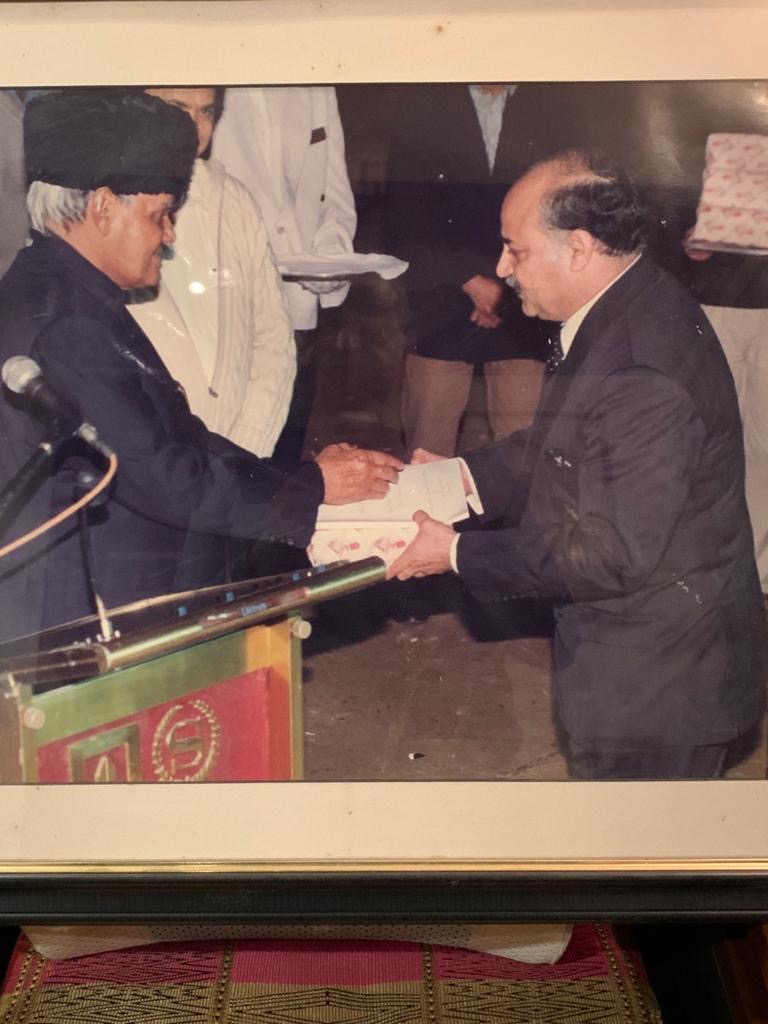
Among individuals, tourism leaves an economic imprint in the lives of a vast number of people – from farmers to tour operators and travel agents, airline crew and staff, auto-rickshaw and taxi drivers, shopkeepers and souvenir sellers, and of course, hoteliers, restaurateurs and mall owners. The business sectors intertwined with tourism include airlines, automobiles, food processing, infrastructure, liquor, railways, and road transport. The ministries that impact, and are impacted by, travel and tourism are civil aviation, culture, defence, excise, external affairs, finance, health, home, industry, infrastructure, Jal Shakti, labour and urban development. And then of course we have the state governments with their individual tourism and excise policies, licencing norms, and ways of doing business.
It is this complex web of individuals and businesses that shape a country’s travel and tourism sector, and it gets more complex when we have to factor in how individual-driven the business is. As Rehman put it, “I dare say it is a people’s industry where every citizen contributes to the overall tourist experience.”
No one knows this better than Rehman, an Indian Military Academy (IMA) graduate and former Indian Army officer who started his career in the industry with Pishori Lal Lamba’s Rama International in 1975 in Aurangabad. Thereafter, he joined ITC’s Hotels Division and as he rose in the hierarchy, he assiduously expanded the footprint of the organisation and created sub-brands such as ITC One, WelcomHeritage and Fortune, besides iconic restaurants, nurtured the philosophy of Responsible Luxury, rolled out hotels, from the ITC Grand Maratha to the ITC Sonar, that re-defined the business of luxury, and launched the travel solutions company, International Travel House, which translated the holistic view of travel and tourism that Rehman has always believed in from the bottom of his heart.
Outside ITC, Rehman formed the Hotel Association of India (HAI) to give a platform where the united voice of the operators of five-star hotels could be heard across the country. He has headed the national tourism committees of the country’s three leading trade and industry bodies, FICCI, CII and Assocham. He has also been a founder-member of the India Chapter of the World Travel and Tourism Council (WTTC) and Experience India Society, which, by bringing together the country’s leading hotels and tour operators on one forum, seeks to break down the silos that Rehman cautions us against.
SERVING A NATIONAL OBJECTIVE
“We have toyed with the idea of creating a national tourism board, or a collection of committees of industry bodies, but they have all worked in silos despite their best intentions,” Rehman commented. “We have not yet created a wholesome national alliance of stakeholders working for the larger purpose of realising our tourism potential.” The most recent example of this kind of unity of purpose was the dinner at Hannover Messe put together in 2015 by the Experience India Society, where every member of the organising team, irrespective of the hotel he or she belonged to, worked with the singular objective of promoting the idea of Make in India. The dinner, presided over by Prime Minister Narendra Modi and Germany’s Chancellor Angela Merkel, will be remembered as one of the most spectacular showcases of India’s soft power at the world’s most prestigious engineering event.
For such engagements to take place in a sustainable way at regular intervals, we need to change the nature of the dialogue that is now taking place in the travel and tourism sector. “The same people show up at all tourism events,” Rehman pointed out. “The preachers and the preached are the same.” The discussions need to draw in a different lot of stakeholders. Being a firm believer of this philosophy, Rehman stays away from speaking at tourism conclaves, which he honestly feels should be left open to new voices.
Making a strong case for reaching out even to the seemingly most insignificant stakeholder, Rehman said: “Unless we create a structure duly empowered to address the many issues embedded in the various ministries and businesses in a holistic manner, beginning with appreciable steps towards sustainable goals, we cannot change the audience for our events.” Having seen the phenomenon of one travel trade meet after another more or less raise the same issues and offer the same solutions for years, Rehman is all for opening up the field to young people with newer, brighter ideas.
As a tourism destination with potential, a lot is going in favour of India, but are we able to harness the wealth of options we have? “Our country is endowed with all the elements of an attractive tourism product,” Rehman said. “The problem, though, is that we wanted to be everything to everybody, at a time when competitive and comparative products were engaged in more sustained marketing. We spent our time copying smaller, well-endowed countries, such as France and Spain, which could be all things to all people.”
It troubles Rehman to see that India’s top-end tourism products are not spoken of in the same breath as their peers. Indonesia is projected for its beaches and culture. Africa, similarly, is best known for its wildlife. India, on the other hand, is a vast tapestry of tourism products, each of which needs to be marketed individually.
A NEW APPROACH TO MARKETING
To quote Rehman, “Identify the competitively fertile sub-categoies and develop products with a competitive mindset.” He gives the example of Goa. Why is the destination not mentioned in the same breath as Bali or the Gold Coast? Or, why don’t we market our wildlife reserves in the same way as the Masai Mara, or the Serengeti, or the Kruger National Park? “We have the instance of Jaisal Singh, who has done a commendable job on his own to promote wildlife tourism. And then we have Jose Dominic, the visionary hotelier who was the first in the country to turn eco-tourism into an attractive business proposition,” Rehman pointed out, adding that there’s a need to market many more such individual efforts that are making a difference to the way the world sees India.
Going back to his pet peeve – the tendency of tourism stakeholders to not look beyond their silos – Rehman remembered the time when a tour of Delhi, Agra, Gwalior and Jaipur, which covered four states, meant dealing with different taxation structures, paying for different transport permits, and coping with a myriad of liquor laws. On top of all this, the quality of the journey wasn’t always the best because of the condition of the roads or the quality of roadside amenities. A part of the problem has been managed by the introduction of GST, despite the reservations that hotel and restaurant operators have against the system, but the uneven condition of roads and public amenities remains an issue; so does the multiplicity of liquor laws. A favourable tourism climate is a sum of so many different parts managed by different individuals, businesses and government authorities.
Remembering the days when he was the General Manager of Mughal Sheraton, Agra, Rehman said how he had got the local industry to create an experience out of Fatehpur Sikri akin to walking across the London Bridge and Tower of London. Our national aspiration must be to turn each destination into a unique experience. That is how we can add the Incredible onto India.
AN OPPORTUNITY PRESENTED BY PM MODI
Rehman said Prime Minister Narendra Modi had presented the travel and tourism industry a great opportunity by exhorting people to visit at least 15 domestic destinations before 2022. Just announcements, however, won’t carry the idea forward. All the stakeholders concerned must come together and operationalise the Prime Minister’s exhortation by identifying the circuits where they will attract the people who respond to the call. These circuits must represent a good blend of areas of religious, cultural and national interest. And these must be rolling circuits so that every three or five years, newer ones can be developed and promoted as tourism products.
Rehman lays down a two-step plan to turn these circuits into centres of sustainable domestic and international tourism. The process starts with identifying the circuits with long-term potential. Take the case of Ayodhya. The holy city has returned to the national headlines and with a peaceful solution to the temple imbroglio having been hammered out, the Central and state governments must now step in to incentivise airlines, tour operators and hoteliers to develop the tourism infrastructure of Ayodhya. The target for the city, according to Rehman, should be to develop one lakh rooms, priced between Rs 500 to Rs 50,000 to cater to all categories of religious tourists. Ram Mandir must be built as a Grand Mandir befitting Lord Ram but also the entire city of Ayodhya should be developed with the help of all stakeholders so mentioned and not just the State Government, with a flavour of Ramayana, keeping in mind the sensibilities so essential. Perhaps it’s worth mentioning that the city of Mecca/Saudi Arabia reportedly earns about 12 billion dollars annually from the visits of the pilgrims and about a third of it in the duration of Hajj. With a clear possibility of multiple faith adherents, Ayodhya presents an enormous potential along with spiritual, an uplifting experience – a most befitting tribute to Lord Ram – besides the festivals possible that remain associated with the city.
The next step is to create products and packages after taking into confidence industry players, state governments, airlines and the railways, and even the Central Government, which can incentivise holiday travel with schemes such as the LTC (leave travel concession) for its legions of employees.
A region of the country waiting for this expansion of tourism infrastructure is the north-east. “It must be made essential for all Indians to visit the north-east to build bridges with the people living there,” Rehman said. “Kashmir, similarly, offers an opening to be rebuilt and its appeal as an international tourist destination to be restored and enhanced.” And the next big opportunity is to knit tourism products into smart cities and urban renewal projects. As an important first step, the heritage spots of these smart cities can be converted into contemporary urban experiences.
INTEGRATED, INTER-SECTORAL APPROACH
Rehman gives the example of how Aurangabad, a designated ‘backward area’ in the 1970s, was converted into a bustling city because of the vision of Rafiq Zakaria, a confidant of Indira Gandhi who, when he was a minister in Maharashtra, recognised that the district was the home of “the two neglected jewels of Indian heritage” – Ajanta and Ellora.
Working on the idea of increasing footfalls at what were clearly two tourism magnets waiting to be developed by the world, Zakaria took an inter-sectoral approach to the development of the destination. He got two prominent hospitality industry families of Mumbai – the Ghei-Lambas and the Narangs – to launch hotels (Rama International and Ambassador Ajanta, respectively) and simultaneously got the existing airstrip upgraded to an airport.
He even got the Tatas, owners of the Taj Group of Hotels, to open an Institute of Hotel Management to address the need for trained human resources that any infrastructure development throws up. It was an early example of what Rehman call “an integrated, inter-sectoral approach to tourism development”.
India, according to Rehman, has always enjoyed a “huge civilisational advantage” and this in turn gave birth to the “proud assumption that everyone would want to come to India because of the heritage we have to offer”. Even this heritage has been unevenly marketed, as in the case of Madhya Pradesh, which has so much to offer in terms of both heritage and wildlife endowments, and yet is so little talked about.
For a country of our size, we still do not have a world-class convention centre, although with the Dwarka Convention Centre coming up in Delhi, and the makeover of Pragati Maidan going according to plan, this need will be addressed to some extent. The country also needs many more gateways. Goa, for instance, is in dire need of an international civilian airport, but for the past 30 years we have been debating the possible location of the airport, and the discussions get bogged down in the competing claims of North and South Goa. And just as the proposed greenfield airport at Mopa in North Goa seemed to offer a way out, a Supreme Court order in 2018 delayed construction work by a year, so it is not likely to become operational until 2022.
Our tourism philosophy, Rehman said, must be driven by the desire to capture better value from existing customers. “How can we add more tourism nights from the same customers?” Rehman asked, laying out the challenge facing the industry. The answer lies in what he described as “proactive destination management”, whose three critical elements are a code of behaviour respected by all stakeholders, an understanding of global sensitivities, and easy access to information about each major tourism hub and its many attractions and activities.
Just heritage is not enough to be a stand-alone attraction – what matters on the ground is the state of the heritage and the activities on offer around monuments, the infrastructure supporting tourism, the sense of safety and security, the information environment, and the linkages with urban renewal projects and smart cities. Tourism has never flourished in a silo.
–By Sourish Bhattacharyya

